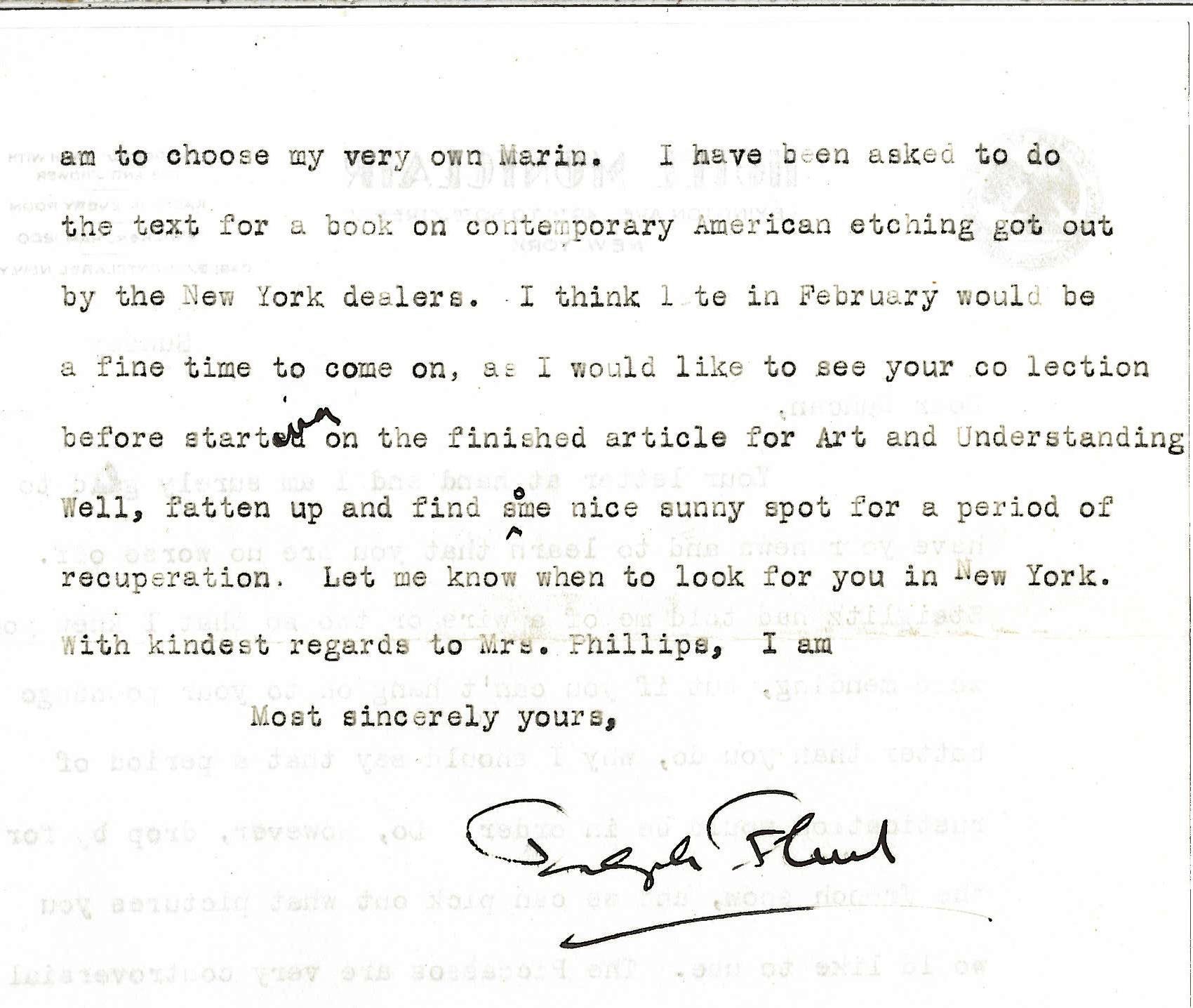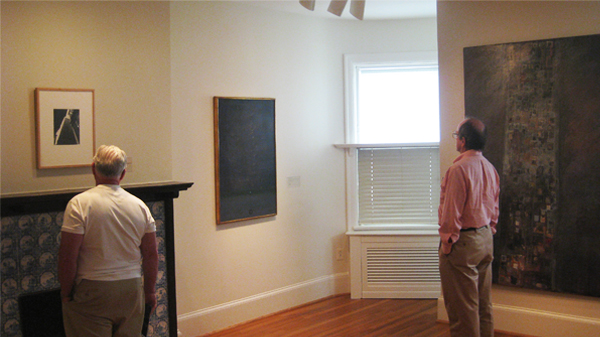A few days ago, I wrote about my first encounter with the undated drawing Metropolis by an artist of whom I had zero awareness, Ralph Flint. On a trip to The Phillips Collection library, I discovered through light research that Flint was a critic as well as an artist, but it wasn’t until Librarian Karen Schneider came to me with an exciting find that a portrait of Flint began to emerge.
In a thin file of ephemera related to Flint, Schneider found a letter sent directly by Flint to Duncan Phillips describing his progress on a review of the current art season for Phillips’s magazine, Art and Understanding, as well as some amusing personal anecdotes.
This letter, in addition to his essay in Art and Understanding, convincingly casts Flint as a writer who ran with Alfred Stieglitz’s circle and apparently was close and personable with Duncan Phillips. Continue reading




